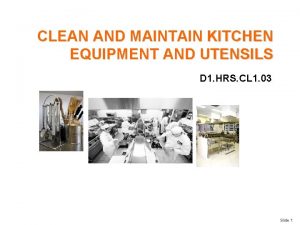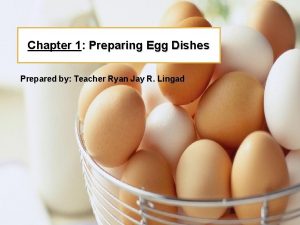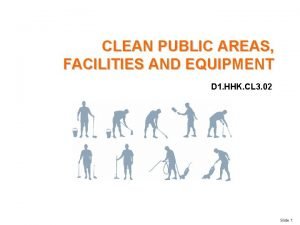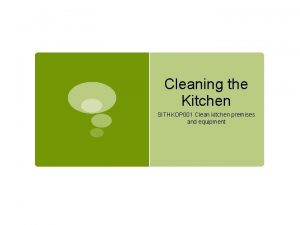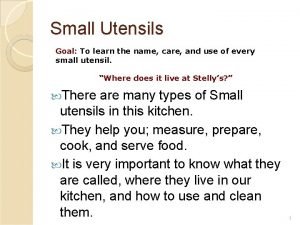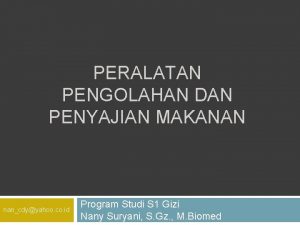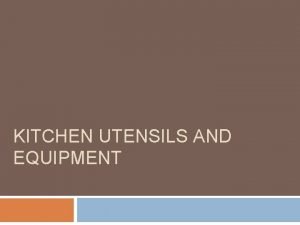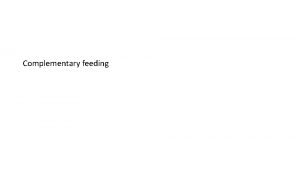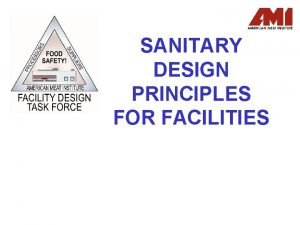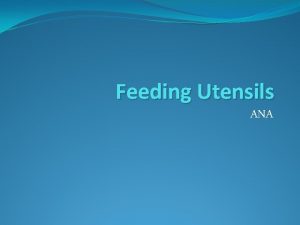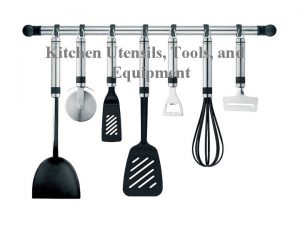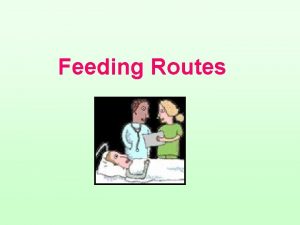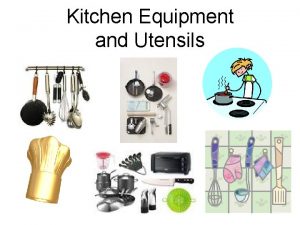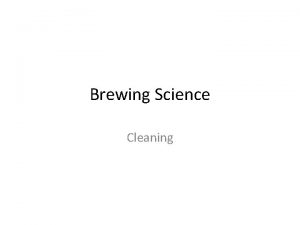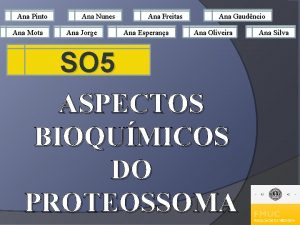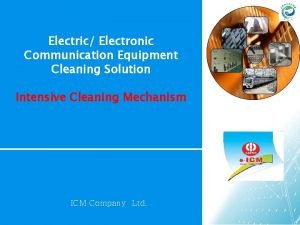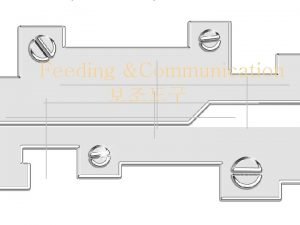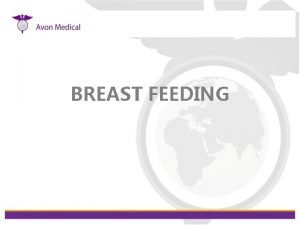Feeding Utensils ANA Principles of cleaning feeding equipment














- Slides: 14

Feeding Utensils ANA

Principles of cleaning feeding equipment �Many feeding utensils are required when preparing food in a veterinary practice. This is due to the variety of diets and species being fed. �Common utensils include: Bowls, plates, measuring jugs, syringes, knives/forks/spoons, microwave, blenders, whisks, pans, storage containers, feeding tubes, water bottles and weaning bottles.

Feeding equipment

Feeding equipment

Feeding equipment

Feeding Equipment

Feeding Utensils �Feeding equipment must solely used for animal species and must never be shared with humans food preparation. This is to avoid zoonosis such as salmonella and e-coli �All feeding equipment should be cleaned and sterilised in an appropriate manner to avoid cross contamination �Once the feeding equipment is fully decontaminated it must be stored in a dry clean cupboard, ready for use.

Cleaning feeding equipment �General cleaning principles apply. �The equipment should be thoroughly cleaned with a detergent and hot water to remove food residue. �A dishwasher may be used for this stage of the process or manual washing. �Once deemed cleaned the equipment should be disinfected or sterilised

Cleaning Feeding equipment �Care must be taken if using chemical disinfectants, they must be fully rinsed before serving food in them. Toxic effects could be seen if this is not followed. �Many products e. g stainless steel and ceramic can go in the autoclave to be fully sterilised �Sterilisation fluid such as Milton may also be used, again care must be taken to ensure fully rinsed.

Health and safety �Health and safety must always be a priority when feeding animals. �All equipment must be checked for cracks or damage before feeding as this could cause injury to both the person feeding and animal. Also cross contamination may occur from cracks and chips in the equipment. �The feeding equipment must be suitable for the animal you intend to feed �Sharp equipment such as knives and blender blades should not be left in sinks of water, the staff may get injured if they do not know it is there. �Care must be exercised when removing and cleaning knives and blades.

Storage �Once clean and dry the equipment should be placed in clean cupboards. �Cupboards are preferable to shelving as less likely to be contaminated with dust and gives a tidier appearance to the practice. �Cupboards should be regularly cleaned and disinfected. �Vermin control should be in place

what is Stock rotation ? �If food is taken out of storage or put on display, it should be used in rotation. Food stock rotation consists in using products with an earlier use-bydate first and moving products with a later sell-by date to the back of the shelf. �This ensures that food is used within date and prevents unnecessary and costly waste (of food that has passed its expiry date). Stock rotation applies to all food types but is particularly important for high-risk food.

Why is stock rotation? �You should ensure that all staff are aware of the importance of stock rotation and understand how your stock rotation system works. The following steps are essential to implement a solid food stock rotation: �Checking dates on food when it is delivered, used or put on display �Storing or displaying food with a short shelf life at the front of the shelf � Storing or displaying food with a longer shelf life at the back �Always using food in the correct order �Checking that food is in good condition before using it �Removing any out-of-date stock from storage or display

You are now able to complete task 2, 3 and 4 in your nutrition booklet – including task 1 (nutrients)
 Clean and maintain kitchen equipment and utensils
Clean and maintain kitchen equipment and utensils Tools utensils and equipment needed in egg preparation
Tools utensils and equipment needed in egg preparation Specialized nutrition support
Specialized nutrition support Clean public areas, facilities and equipment
Clean public areas, facilities and equipment Clean kitchen premises and equipment
Clean kitchen premises and equipment Small utensils
Small utensils Kitchen tools and function
Kitchen tools and function Alat penyajian
Alat penyajian Stirring utensil that will not conduct heat as you stir!
Stirring utensil that will not conduct heat as you stir! Keep cake fresh
Keep cake fresh Hands up hands down
Hands up hands down Principle of complementary feeding
Principle of complementary feeding Principles of artificial feeding
Principles of artificial feeding Sanitary equipment design principles
Sanitary equipment design principles Tru count air clutches
Tru count air clutches
